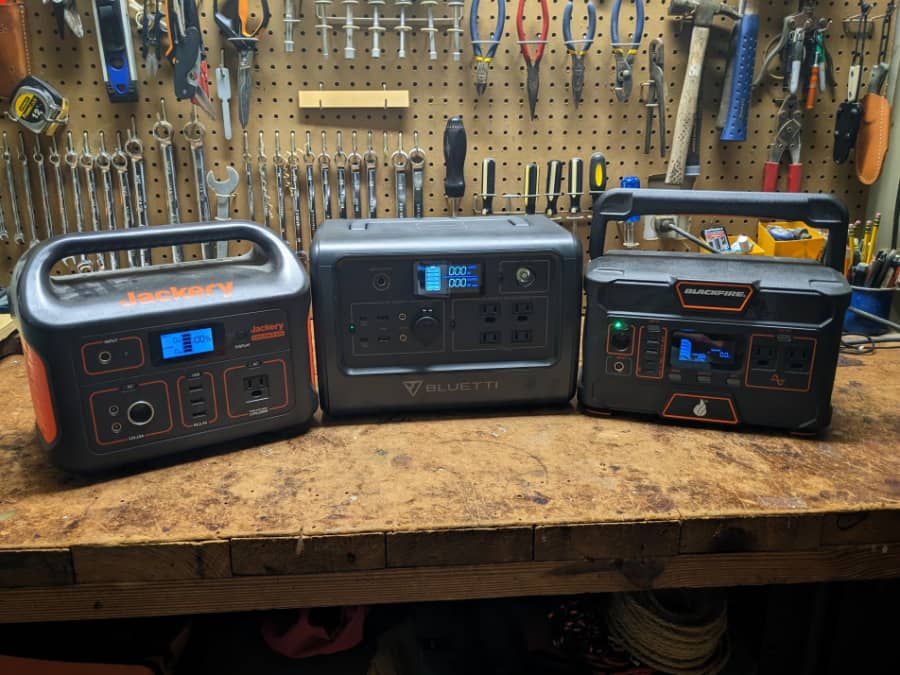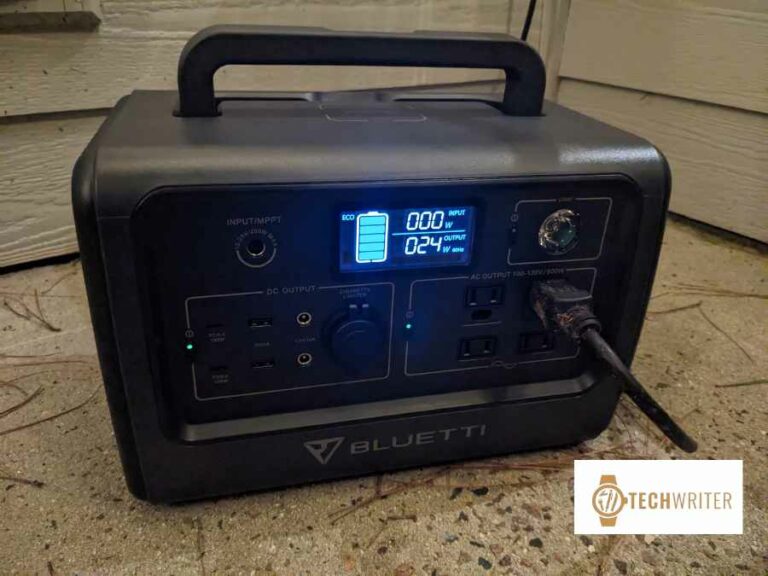What is a Rechargeable Portable Power Station?
Quick Answer: A rechargeable portable power station is a versatile and compact energy storage unit that allows you to power electronic devices and appliances when you’re away from traditional power sources. It combines a rechargeable battery, an inverter to convert DC to AC power, and multiple charging ports into a single, portable design. Whether you’re camping, tailgating, or in need of emergency backup power, a portable power station offers a convenient and reliable energy solution.
Imagine having a reliable power source wherever you go, whether on a camping trip, during a power outage, or simply when you need to charge your devices while traveling. That’s where rechargeable portable power stations come into play. These ingenious devices are essentially compact and portable batteries that can store and deliver electrical energy when needed. Think of a backup battery pack you use for your cell phone on a bigger scale.
A rechargeable portable power station, also known as a portable power bank or generator, is an innovative device that allows you to store and utilize electrical energy on the go. It consists of several key components that work together to provide a convenient source of power for various electronic devices. The heart of these power stations lies in their battery pack, typically comprised of advanced lithium-ion batteries.
These batteries are selected for their lightweight design and high energy density, which means they can store significant electrical energy while keeping the overall weight manageable. This makes them ideal for portable applications.
Why A Portable Power Station Is Needed
In our increasingly digitalized world, where we heavily rely on electronic gadgets such as smartphones, tablets, laptops, and cameras, having access to reliable sources of power is crucial. Whether you’re out camping in the wilderness or facing an unexpected power outage at home, having a rechargeable portable power station ensures that you never have to worry about being disconnected from the world around you.
Furthermore, as technology continues advancing at an unprecedented pace and our reliance on electronic devices grows, the demand for portable power solutions becomes even more significant. People are constantly on the move, whether it’s traveling for work or pleasure, and being able to power their devices wherever they go has become a necessity.
Rechargeable portable power stations are not only convenient but also versatile. They can power a wide range of devices, from small electronics like smartphones and tablets to larger appliances such as refrigerators or medical equipment during emergencies. However, a rechargeable power station that can be used for a fridge is or medical stuff is more a substantial commercial unit, which is not what I am talking about here.
This versatility adds to their appeal and makes them an essential companion for adventurers, outdoor enthusiasts, and anyone seeking reliable backup power. Rechargeable portable power stations have emerged as an indispensable solution in today’s world.
By providing a convenient source of electrical energy on the go, they offer freedom from the constraints of relying solely on traditional electrical outlets. With their compact size and environmentally friendly operation, these devices have quickly gained popularity among those who value convenience, sustainability, and the ability to stay connected no matter where they are.
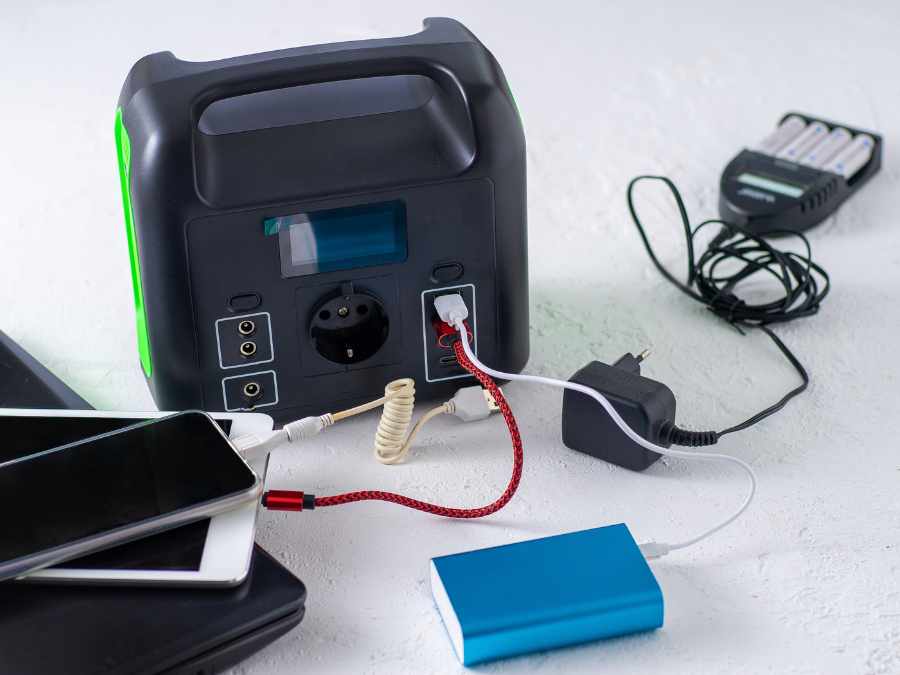
Main Components of a Rechargeable Portable Power Station
Battery pack
When it comes to the battery pack of a rechargeable portable power station, one type stands out for its exceptional characteristics: lithium-ion batteries. These marvels of modern technology are known for their lightweight nature and high energy density.
These batteries are the same ones that power your smartphones and laptops, so you know they’re dependable. But don’t let their small size fool you – portable power station batteries pack a punch!
This means that despite being compact and easy to carry around, they can store substantial energy. Lithium-ion batteries have become the go-to choice for power stations due to their efficiency and reliability.
You may find power stations with battery capacities ranging from 150Wh all the way up to a whopping 1500Wh or more! This means you’ll have enough juice to charge your phone multiple times and even run small appliances like mini-fridges or laptops for extended periods.
Lithium-ion batteries – Lightweight and high energy density
Lithium-ion batteries owe their popularity in the world of portable power stations to their remarkable traits. Lithium-ion batteries are much lighter than traditional lead-acid batteries used in older models, making them ideal for on-the-go power needs. Their high energy density means they can store more electrical charge in a smaller volume, providing ample power output despite their compact size.
Capacity and voltage ratings – Determining the power output
The capacity and voltage ratings play crucial roles in determining a rechargeable portable power station’s overall performance and power output capabilities. Capacity is measured in watt-hours (Wh) or ampere-hours (Ah), representing how much energy the battery pack can hold. The higher the capacity, the longer your devices can be powered before recharging becomes necessary.
Voltage ratings indicate how much electrical potential is available for use by connected devices. Depending on device compatibility, common voltage ratings include 12V, 24V, or even higher values.
Inverter
In order to make the stored DC (direct current) electricity usable by household appliances that typically run on AC (alternating current), rechargeable portable power stations employ an essential component known as an inverter. This means that you can use your car or truck to recharge your power station.
Conversion of DC (direct current) to AC (alternating current)
The inverter’s primary function within a rechargeable portable power station is to convert the DC electricity stored in the battery pack into AC electricity. This conversion process allows devices that rely on AC power to operate seamlessly. Whether it’s powering up laptops, running kitchen appliances, or charging your electric toothbrush, the inverter bridges the gap between DC storage and AC usage.
Sine wave vs modified sine wave inverters – Impact on device compatibility
Two types of inverters commonly found in rechargeable portable power stations are sine wave and modified sine wave inverters. Sine wave inverters produce a clean and smooth waveform that closely resembles the pure AC power you receive from traditional electric utilities.
On the other hand, modified sine wave inverters generate a stepped waveform that differs from standard household power, but is still compatible with most devices. However, certain sensitive electronics such as medical equipment, high-end audio systems, or variable-speed motors may require a pure sine wave for smooth operation.
- [Tiny but Mighty] – With a 600W AC inverter, 268Wh LiFePO4 battery pack, and 9 outlets, this power station will keep your essential devices powered on the go or during a home power outage.
- [Ultra-fast Charging] – No bulky power brick, a single cable is good to charge it at most 350W; you also can use the PV+AC together for 80% SOC in just 30 min.
- [Harness the Power of Sun] – The built-in MPPT controller supports up to 200W of solar input, enabling you to make an ideal solar generator with BLUETTI PV120/PV200 solar panel.
- [Reliable UPS] – EB3A instantly provides backup power when the grid fails, protecting your desktop PC, file servers, and other sensitive devices from data loss or damage.
- [What You Get] – BLUETTI EB3A portable power station, AC charging cable, solar charging cable, user manual, 24-month warranty, and friendly customer service.
Charging system
The charging system of a rechargeable portable power station ensures that its battery pack has enough energy to meet your needs whenever and wherever you require it. Most portable power stations can be charged using two primary methods: an AC wall outlet and solar panels.
Solar panels – Harnessing renewable energy for charging on-the-go
One of the key features of many modern portable power stations is their ability to harness solar energy through built-in solar panels or external panels connected via input ports. This allows for environmentally friendly charging on the go by utilizing renewable energy sources during outdoor adventures or emergency situations where access to traditional electrical outlets may be limited.
AC wall charger – Convenient option for indoor charging
For indoor use or situations where solar charging isn’t feasible, rechargeable portable power stations typically come with an AC wall charger. This convenient option allows you to connect your power station directly to a standard electrical outlet to recharge its battery pack. It provides a reliable and straightforward alternative, ensuring your power station is always ready for action when you need it most.
By understanding the components of a rechargeable portable power station – including the battery pack, inverter, and charging system – you can decide which model best suits your needs. With lightweight lithium-ion batteries, efficient inverters, and versatile charging options like solar panels or AC wall chargers, these power stations empower you to stay connected and powered up wherever your adventures take you.
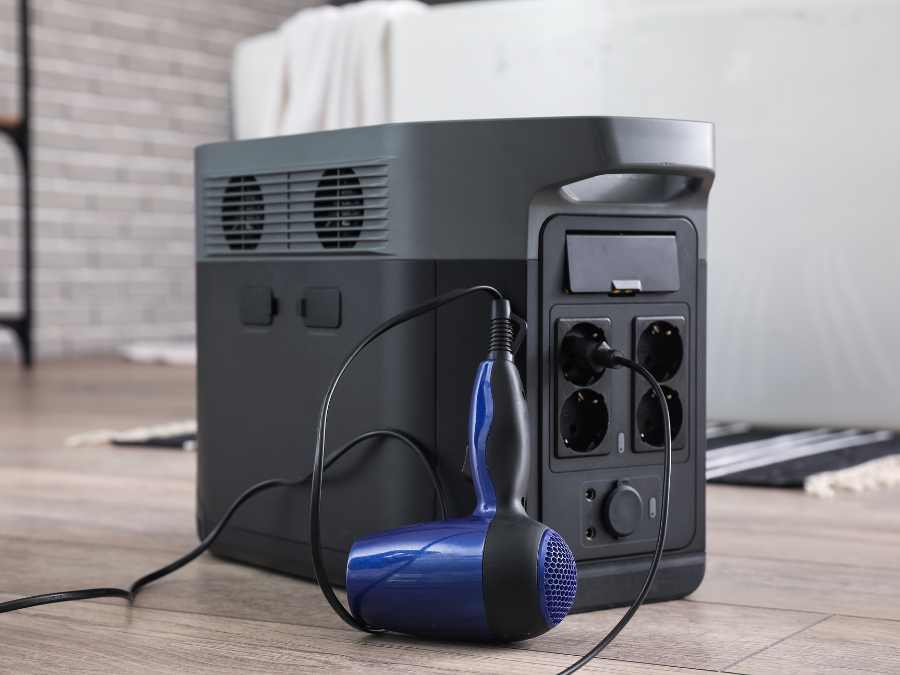
Basic Features and Functionality
Power outlets and ports:
Think of a rechargeable portable power station as the ultimate source of energy for all your electronic companions, be it at home, on the road, or out in the wilderness. These power stations come equipped with an array of outlets and ports to suit your various needs. Let’s dive into some of the most common ones:
AC outlets – powering household appliances and electronics
One of the most prominent features found on these power stations is their AC (alternating current) outlets, which allow you to connect and power standard household appliances and electronics. Imagine being able to run your mini fridge, charge your laptop, or even watch a movie on your TV while enjoying a picnic in the park. With an AC outlet at hand, you can bring modern conveniences wherever you go.
USB ports – charging smartphones, tablets, and other small devices
In our smartphone-dominated world, keeping our beloved devices charged has become a necessity rather than a luxury. That’s where the USB ports on rechargeable portable power stations come in handy.
These versatile ports enable you to charge smartphones, tablets, Bluetooth speakers, smartwatches – you name it! So next time you’re camping or attending an outdoor event with friends, fear not running out of battery juice; simply plug in your device to one of those trusty USB ports.
DC outlets – compatibility with car chargers or devices with DC input
If you’re planning a road trip or need to power devices that rely on direct current (DC), such as car chargers or certain electronics designed for automotive use – fret not! Many rechargeable portable power stations boast DC outlets specifically built for such compatibility. Whether it’s keeping your dashcam powered during long drives or charging your portable cooler in the backseat, these outlets ensure seamless connectivity between your power station and DC-powered devices.
LCD display and control panel: Power at Your Fingertips
Every technology enthusiast appreciates an intuitive control panel that offers insight into the inner workings of their devices. Rechargeable portable power stations often come equipped with LCD displays and user-friendly control panels, elevating their functionality to a whole new level.
Real-time monitoring of battery status, power usage, and remaining runtime
The LCD display provides you with real-time information about crucial aspects of your power station’s performance. You can monitor the battery status, allowing you to keep track of how much energy is left before it’s time for a recharge.
Additionally, it offers insights into power usage, enabling you to optimize energy consumption according to your needs. With this valuable information at hand, you can plan your activities without worrying about unexpectedly running out of power.
Control over output voltage, frequency, or other settings
Not only does the control panel allow you to observe vital statistics but it also grants you full control over various settings. One such setting is the output voltage – adjust it according to the requirements of specific devices that demand varying voltages for optimal functioning.
Moreover, some advanced models even let you manipulate the frequency output if needed. This unparalleled flexibility ensures compatibility with a wide range of gadgets while optimizing their performance.
These remarkable features – from versatile power outlets catering to all types of devices to intelligent LCD displays offering real-time monitoring and control – make rechargeable portable power stations indispensable in our tech-centric lives. So gear up and embrace this empowering technology that brings electricity wherever adventure beckons or emergency strikes!
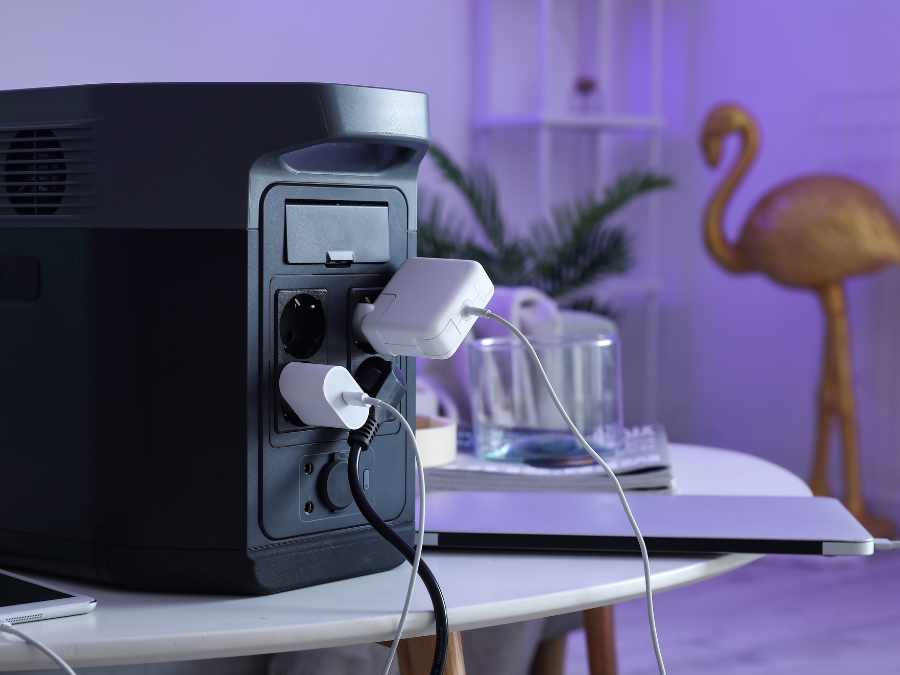
Where Can You Use A Rechargeable Power Station?
Outdoor Activities
When it comes to outdoor adventures, a rechargeable portable power station is a game-changer. Picture yourself on a mesmerizing camping trip, surrounded by nature’s beauty. With your trusty power station by your side, you can easily light up your campsite.
I think one of the best places to use a power station is when car camping, tailgating or at a big BBQ in the park. These power stations can run lights, power a coffee machine, or even power a blender to make fancy drinks on a beach!
It adds an element of convenience and comfort, making every outdoor experience unforgettable. RVs or boating enthusiasts are no strangers to the challenges of powering their devices while on the move.
That’s where rechargeable portable power stations really shine. Simply connect your power station to your RV through its AC outlets and voila!
You have continuous electricity for all your appliances, entertainment systems, and even air conditioning units (if they’re compatible). Boaters can also benefit from these versatile devices by keeping their navigation systems, communication equipment, and other electronics operational throughout their maritime expeditions.
- [Powerful Beast] – AC200MAX power station comes with amazing 2048Wh LFP cells and a 2200W inverter, making it a safe and reliable power center on the way or off-the-grid.
- [Expandable Capacity] – AC200MAX supports 2 BLUETTI B300(3072Wh) for a whopping 8192Wh or 2 B230(2048Wh) for 6144Wh, enough to juice up all hungry devices.
- [Super Fast Charging] – AC200MAX supports dual charging, which takes up to 900W solar and 500W AC input. Recharged by 3 PV200 solar panels, you can feed it up in less than 5 hours.
- [16 Ports for All Needs] – Besides AC/USB/Car port/100W PD, the NEMA TT-30 and 12V/30A DC port are perfect for RV dwellers and DIYers, while the wireless chargers bring you ultra convenience.
- [What You Get] – BLUETTI AC200MAX portable power station, 500W AC adapter, solar/car charging cable, XT90-aviation cable, user manual, 48-month warranty, and friendly local customer service.
Emergency Backup Power Source
We’ve all experienced those dreaded power outages that seem to strike at the most inconvenient times. Fear not, for a rechargeable portable power station is here to rescue you from the darkness!
During prolonged blackouts, these mighty machines can be a lifeline for running essential devices like refrigerators or medical equipment that rely on electricity to keep us safe and healthy. Imagine having peace of mind knowing that even when the lights go out unexpectedly, you’ll still have access to vital resources.
Other Places A Portable Power Station Comes In Handy:
Camping: To power lights, charge phones, and even run small appliances like a portable fridge.
Tailgating: Powering speakers, TVs, or cooking equipment during pre-game festivities.
Outdoor Events: Such as concerts or festivals, to power sound systems, lights, or food trucks.
Boating/Fishing Trips: To charge fish finders, radios, and other essential electronics.
Road Trips: For powering devices like GPS, smartphones, and even electric coolers.
Emergency Backup at Home: During power outages to keep essential appliances running, such as lights, fans, and phone chargers.
Remote Work Sites: For construction or field research where traditional power sources are unavailable.
RV and Van Life: To supplement the vehicle’s own power system for additional electrical needs.
Beach Days: To power fans, charge phones, or run a small portable refrigerator.
Photography/Videography Shoots: For powering cameras, lights, and other equipment in remote locations.

Understanding the Wattage Range: Choosing the Right Portable Power Station for Your Needs
The wattage range of portable power stations varies widely to accommodate different energy needs, typically ranging from around 200 watts to over 1,800 watts. When it comes to portable power stations, one important factor to consider is the wattage.
Wattage refers to the amount of power a portable power station can deliver, which plays a crucial role in determining what devices you can power with it.
Portable power stations come in a range of wattages, typically starting from around 200W and going up to 1800W or even higher.
Here’s a breakdown of what you can generally expect within these wattage ranges:
Low-End Wattage (200W – 500W)
- Common Uses: Charging smartphones, tablets, laptops, and powering small appliances like fans or lights.
- Portability: Usually lightweight and highly portable.
- Battery Life: Generally longer-lasting for low-draw devices but not suitable for high-energy appliances.
Mid-Range Wattage (500W – 1,000W)
- Common Uses: Can handle the above plus more energy-intensive devices like a mini-fridge, TV, or power tools.
- Portability: Still portable but may be heavier and larger than low-wattage models.
- Battery Life: Moderate battery life, depending on the devices connected.
High-End Wattage (1,000W – 1,800W+)
- Common Uses: Suitable for running multiple devices simultaneously, including energy-hungry appliances like microwaves, electric grills, or even some air conditioners.
- Portability: Generally bulkier and heavier, making them less convenient for on-the-go use.
- Battery Life: Shorter battery life when powering high-wattage appliances, but can last longer if used judiciously.
Understanding the wattage range is crucial for determining what you can power with your portable station and for how long. Always consider your specific energy needs when choosing a model within this wattage spectrum.
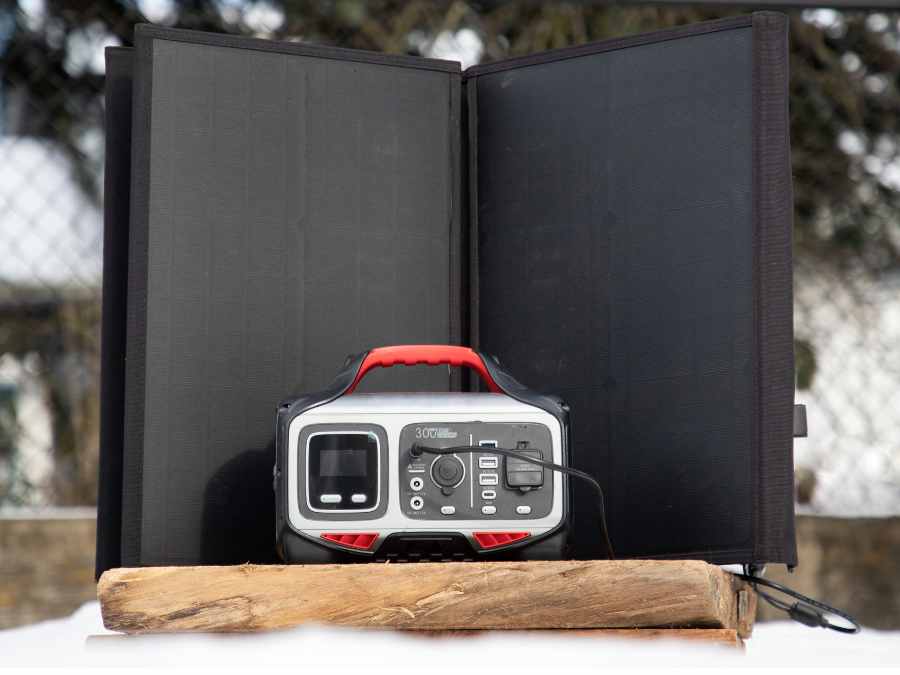
Advantages Over Traditional Generators: Great For Smaller Applications
When it comes to portable power solutions, rechargeable portable power stations have a clear edge over traditional generators, and that is portability and noise.
First and foremost, portability is a major benefit of rechargeable portable power stations. Unlike bulky and heavy generators, these power stations are designed with mobility in mind.
They are compact, lightweight, and easy to carry around wherever you go. Whether you’re heading out on a camping trip or need emergency backup power during a blackout, you can conveniently transport your power station without breaking your back or needing multiple people to lift it.
This portability factor makes rechargeable portable power stations incredibly versatile and suitable for both indoor and outdoor use. Another advantage worth highlighting is the significantly lower noise level of rechargeable portable power stations compared to traditional generators.
I want to make sure people understand the difference in applications between a rechargeable and gas generator. In a hurricane or other major disaster, you are going to want a gas generator if you need to run major appliances such as a refrigerator for long periods.
I have three portable power stations, but since I live in an area with hurricanes and tornados as well as frequent power outages, I still have a 5,000-watt gas generator. A portable power station is not a replacement for a gas generator; they are more an added level of convenience and makes a great addition to having a large gas or diesel generator.
A Portable Power Station Is A Good Accessory To Have
In today’s fast-paced world, where we rely heavily on technology and electricity, rechargeable portable power stations have become indispensable. Whether you’re embarking on an exciting outdoor adventure or bracing for a power outage, these devices offer the freedom and flexibility to keep your devices powered up.
With their ability to provide electricity for lighting, cooking appliances, and even medical equipment, these power stations are truly a modern-day marvel. So, embrace the convenience and versatility they bring into your life, knowing that no matter where you go or what challenges you face, you’ll always have the power at your fingertips.

Blair Witkowski is an avid watch nut, loves pocket knives and flashlights, and when he is not trying to be a good dad to his nine kids, you will find him running or posting pics on Instagram. Besides writing articles for Tech Writer EDC he is also the founder of Lowcountry Style & Living. In addition to writing, he is focused on improving his client’s websites for his other passion, Search Engine Optimization. His wife Jennifer and he live in coastal South Carolina.

